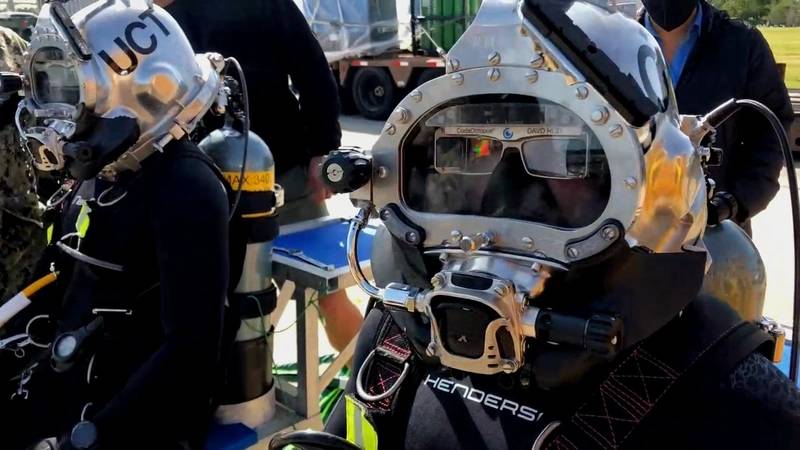The US Office of Naval Research’s (ONR) Warfighter Performance Department has developed a system which enables divers to better operate in inhospitable underwater environments.
The Divers Augmented Vision Display (DAVD) was developed in partnership with Naval Sea Systems Command (NAVSEA) and Coda Octopus.
Through real-time information sharing, high-resolution imagery and an augmented-reality display, DAVD allows Navy divers to operate more effectively in dark, low-visibility environments.
Navy diving missions include deep ocean salvage of vessels and aircraft, underwater rescues, explosive ordnance disposal, ship hull maintenance and recovery of sunken equipment. This often involves working in pitch-black, dangerous conditions littered with hazards such as pier pilings, rock and jagged metal.
Designed to address these challenges, DAVD’s most prominent feature is a heads-up display resembling virtual-reality glasses, which can be adapted to any Navy dive helmet. Other components include specialized augmented-reality software (which allows the Coda Octopus 3D sonar or virtual images to be overlaid on a physical landscape), laptops, cables, cameras and lighting.
While using DAVD, a diver is tethered to a ship or floating platform by cables transmitting vital information between the diver and surface team — including rate of ascent and descent, time elapsed, current and maximum depth and remaining levels of breathing gas.
DAVD can take sonar imagery gathered before and during a dive and use it to create a detailed 3D model of the dive site. In addition, divers are able to receive videos, technical manuals, images, messages and other data to help them navigate underwater and maintain smooth communications with the surface.
Approximately 15 DAVD systems are currently being used by nine naval commands — and have played important roles in both naval and non-naval operations. For example, in the aftermath of the 2023 wildfires in Maui, Hawaii, Navy divers used DAVD to locate 26 boats that had sunk along a marina during the disaster.
Navy and Coda Octopus engineers also employed the DAVD 3D sonar systems to assist in salvage efforts after the March 2024 collapse of Baltimore’s Francis Scott Key Bridge. And DAVD was instrumental in efforts to map the murky waters surrounding the sunken USS Arizona. The purpose was to help U.S. Pacific Fleet and the National Park Service inspect the condition of submerged, severely degraded construction moorings used to build the memorial in the 1950s.
Potential upgrades to DAVD could include GPS for georeferencing (relating a digital map or image to geographic coordinates), physiological monitoring such as an eye-tracking device or enabling DAVD to work without cables connecting to the surface.

